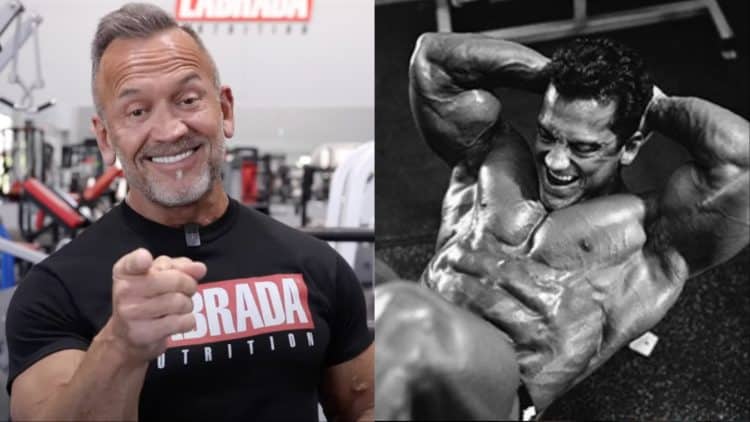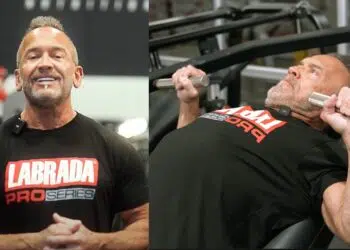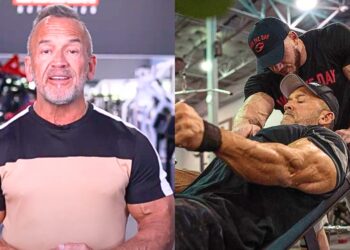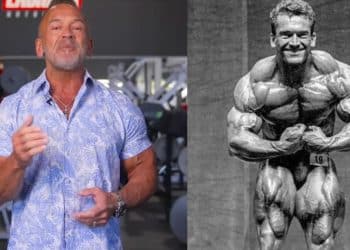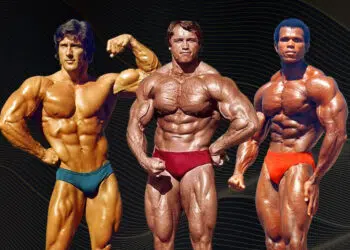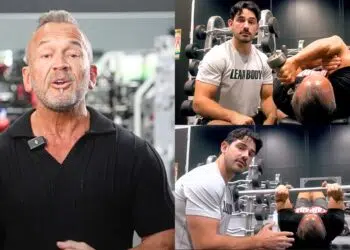Boasting decades of experience in bodybuilding, Lee Labrada‘s workout tips are highly sought after due to their simplicity. In a recent YouTube video, Labrada shared his best practices for leaning out the midsection with three exercises that target the abdomen.
“I’m really excited about sharing the short and intense but very effective ab workout that will help you to tighten your midsection.”
Lee Labrada gained prominence in the 1980s and 1990s as a successful bodybuilder, winning multiple championships, including the IFBB Mr. Universe title. Known for his balanced and aesthetic physique, Labrada focused on symmetry and proportions during his tenure in the sport.
At 63 years old, Lee Labrada continues to train every day and credits his clean diet for his incredible physique. In a show of longevity, Labrada discussed some of his anti-aging secrets, where he credited the sport of bodybuilding as the fountain of youth.
View this post on InstagramGet Fitter, FasterLevel Up Your Fitness: Join our 💪 strong community in Fitness Volt Newsletter. Get daily inspiration, expert-backed workouts, nutrition tips, the latest in strength sports, and the support you need to reach your goals. Subscribe for free!
Lee Labrada Offers 3 Ab Toning Exercises To Tighten The Midsection
After retiring, Labrada is passionate about sharing his knowledge and expertise in fitness and bodybuilding with his fans. He often takes to social media to demonstrate workout and nutrition tips to enhance longevity and gains. This time, he offered some words of wisdom for toning the abs.
“Now perhaps you’ve been exposed to different ab exercises in the past and maybe you’re wondering what makes this ab machine so special?
“Well when it comes to training your muscles, results come from paying attention to the details. The details of how you do the exercises, the details of how hard you work the muscles, and the details of the biomechanics of the movement,” explains Lee Labrada.
Here are the three exercises to help lean out and tone the midsection.
“This ab routine consists of three exercises, number one, incline bench leg raises with a reverse crunch. Number two, ab crunches and number three, planks.”
- Incline bench leg raises with a reverse crunch
- Ab crunches
- Planks
Incline bench leg raises w/ reverse curl
To begin, Lee Labrada walks viewers through a variation of incline bench leg raises with a reverse curl. He states that this is one of his long-time go-to exercises.
“This has been one of my favorite abs exercises for years. I’m going to show you a new variation using an incline bench. It allows you to flex or rotate your spine and pelvis in a way that intensifies the contraction of both your lower and upper ab muscles.”
“The bench will be placed in such a way where you can brace yourself by holding on to an adjacent machine as pictured here, a pole or a weight tree.”
Labrada advises that you pay attention or the exercise will end up working the hip flexor muscles more than the abs.
“You slowly roll your hips up and off the bench and then you slowly un-roll allowing your hips to return to the starting position,” said Labrada. “Rolling the hips is the detail that you have to pay attention to. If you keep your spine flat on the bench and just raise your legs, you’ll work your hip flexor muscles instead more than your abs. You’ll do three sets of 8-10 repetitions.”
Ab Crunches
Next, Lee Labrada walks through ab crunches, once again emphasizing the importance of working the abdominal muscles and not the hip flexors.
“Ab crunches are performed by rolling your torso toward your pelvis as if you were rolling up the carpet. To begin, sit on the ground, lay your back flat on the floor and bring your knees up to a 90-degree angle, holding that position, slowly roll your chest toward your lower abdominals. Again, think about rolling up a carpet. Roll back up into the starting position and repeat.”
“You work your abdominal muscles and not your hip flexors, do three sets as many reps as you can.”
Planks
Labrada finishes with planks which work multiple parts of the midsection and provide not only core strength but pain relief for the back as well.
“Lastly, I finish my ab routine with planks which are great for shrinking your waistline, strengthing the core, and reducing low back pain. Planks look simple but they are not really. The isometric exercise targets the transverse abdominis a muscle which is literally designed like a girdle going around your entire waistline.”
Labrada also offered body positioning tips.
“You’ll do this exercise on the floor, resting on your elbows and the balls of your feet. Begin this exercise by stiffening your entire body into a straight line this is why it’s called a plank. Hold that position as long as you can. It may be difficult at first but eventually you’ll build up time with practice.”
Lee Labrada reminds his viewers that working out isn’t always enough to develop a flat stomach as diet plays an important role in achieving a more toned midsection too.
“Remember, there is no way that you can out-train a poor diet or a diet that is too high in calories.
“If you want to develop a flat stomach that’s going to take a combination of developing your abdominal muscles combined with a diet that’s going to help you burn the fat off your midsection.”
Lee Labrada has previously shared tips for sculpting abs and developing lean muscle which had more to do with diet than exercise. Ensuring the appropriate amount of protein is being consumed along with eating 5-6 meals a day is a crucial part of toning the midsection. Labrada also states that cardio four times a week will help burn off unwanted fat and promote recovery.
As a Men’s Open bodybuilding veteran, Labrada continues to offer insightful workout advice in retirement. Feel free to try out his latest tips for achieving a more toned and flat midsection.
“These three exercises make up the ab training routine. They are highly targeted, intense, and extremely efficient with practice and patience they will get your entire waistline tighter and stronger.”
RELATED: Joe Bennett & Lee Labrada Share ‘Guidances’ on Hypertrophy, Genetics, and Injury Prevention

